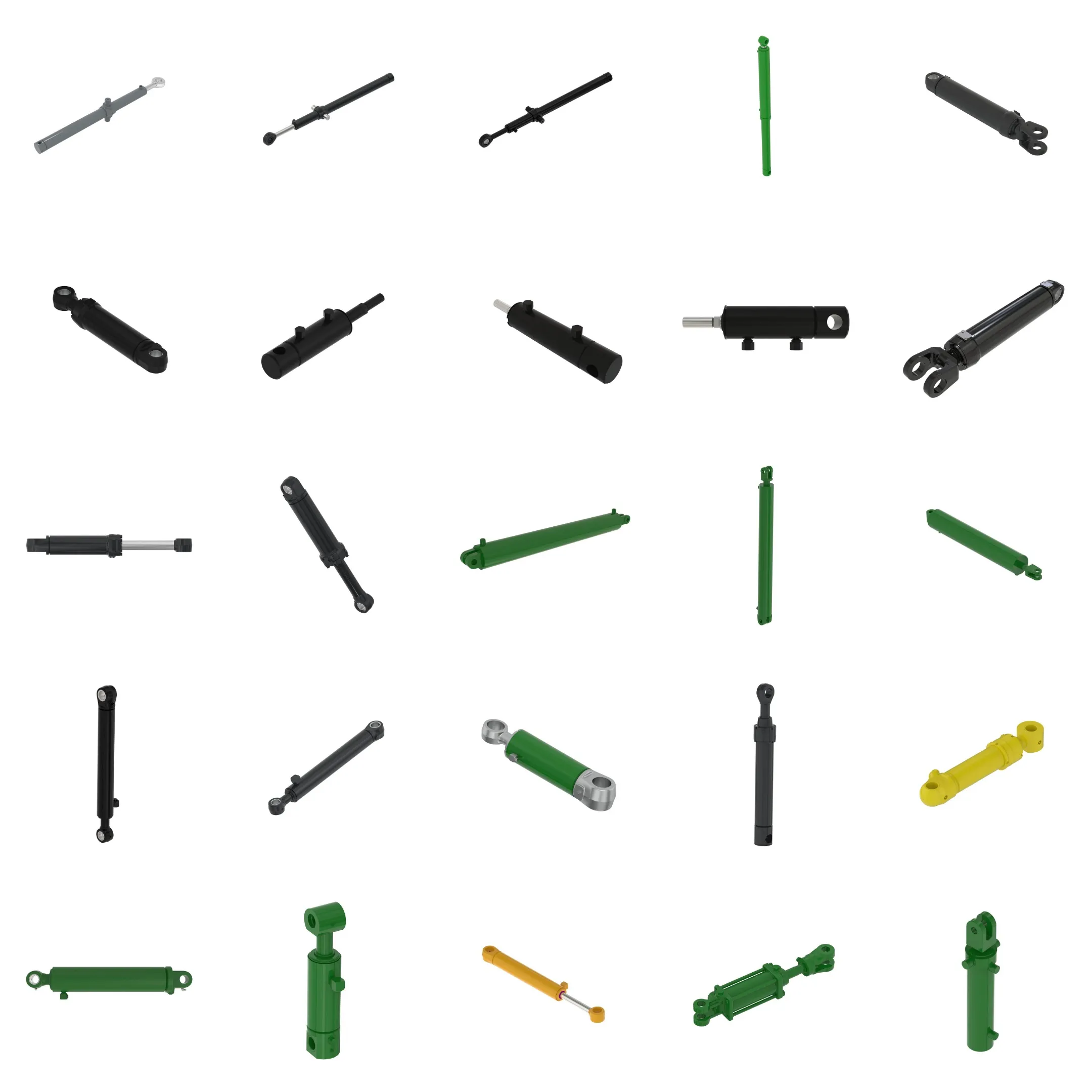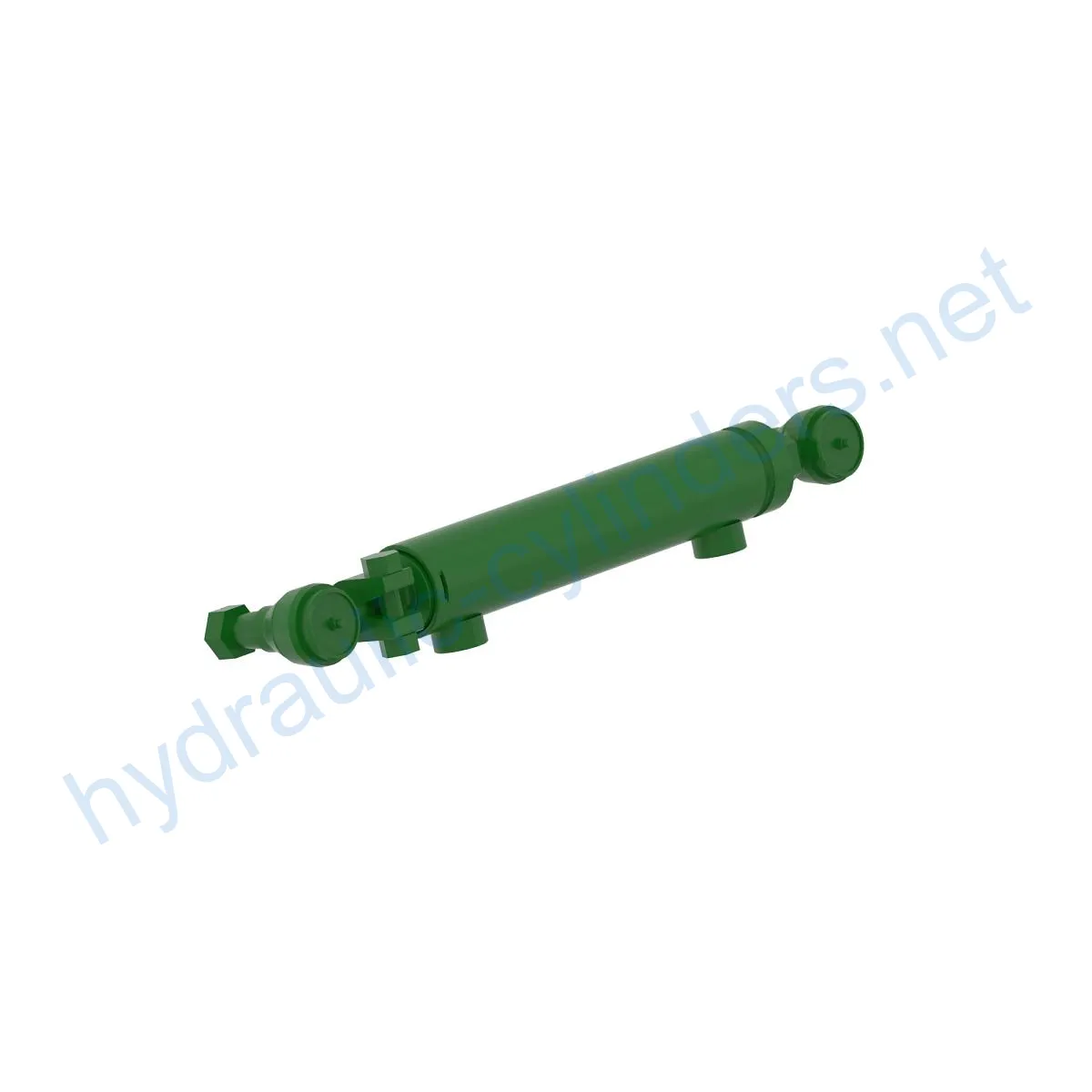Replacement Of AN302048 Steering Hydraulic Cylinder, LH
Yhtenä hydraulisylinterien valmistajista, toimittajista ja mekaanisten tuotteiden viejistä tarjoamme hydraulisylintereitä ja monia muita tuotteita.
Ota yhteyttä meihin saadaksesi lisätietoja.
Posti:sales@hydraulic-cylinders.net
Valmistaja toimittaja viejä hydraulisylinterit.
Replacement Of AN302048 Steering Hydraulic Cylinder, LH
Product Introduction
The Replacement Of AN302048 Steering Hydraulic Cylinder, LH is a hydraulic cylinder designed to replace damaged or worn-out cylinders in various applications. It plays a crucial role in restoring the normal operation of equipment and ensuring its performance in different scenarios.
Specifications and Model
- Weight: 20.65 lb
- Height: 3.3 in
- Width: 5.25 in
- Length: 22.75 in
- Model: 4920
Product Features
- Improved Equipment Performance: Replacing damaged or worn hydraulic cylinders can restore the normal operation of equipment, ensuring its performance in various applications.
- Enhanced Safety: Regularly replacing hydraulic cylinders reduces the safety risks associated with cylinder failures, ensuring the safety of operators and equipment.
- Overload Protection: Modern cylinder designs often include better overload protection mechanisms, enhancing safety.
- Quick Installation: Modern hydraulic cylinders are designed for easy installation and replacement, minimizing downtime.
- Standardized Components: Many hydraulic cylinders are standardized products, making it easier to obtain replacement parts in the market.
Applications
- Excavators: Hydraulic cylinders in excavator arms or buckets may get damaged due to prolonged use or overloading, requiring replacement for normal operation.
- Cranes: Hydraulic cylinders in crane boom arms are prone to wear during frequent lifting and lowering, necessitating regular replacement for safety.
- Tractors: Hydraulic cylinders in front loader attachments of tractors may experience leaks or performance degradation from continuous lifting and tilting operations, requiring replacement.
- Harvesters: Hydraulic cylinders in harvesting equipment endure high pressure during the harvesting process, and timely replacement is needed to maintain work efficiency.
- Automated Production Lines: Hydraulic cylinders are used to control robotic arms and other automated equipment. Cylinder failures can disrupt production efficiency and require immediate replacement.
- Die-casting Machines: In high-pressure and high-temperature environments, hydraulic cylinders may experience performance degradation. Regular replacement ensures product quality.
- Mining Equipment: Hydraulic cylinders are used for lifting and moving heavy loads in mining equipment. Due to harsh working conditions, regular inspection and replacement are necessary to avoid equipment failures.
- Bulldozers: The wear of hydraulic cylinders in bulldozer blade arms can lead to a decrease in pushing capability, requiring timely replacement to maintain operational efficiency.
Maintenance Tasks
- Regular Inspection: Conduct routine inspections to identify any issues or signs of wear in the hydraulic cylinder.
- Proper Lubrication: Ensure adequate lubrication of the cylinder to reduce friction and extend its lifespan.
- Seal Replacement and Calibration Check: Replace worn seals and perform calibration checks to maintain optimal performance.
Safety Considerations and Environmental Factors
When using hydraulic cylinders, it is important to follow safety measures to prevent accidents and ensure the well-being of operators and equipment. Proper handling and maintenance of cylinders contribute to a safer work environment. Consideration of environmental factors helps minimize the impact of cylinder use on the surroundings.
Troubleshooting and Common Issues
Common issues with hydraulic cylinders may include leakage, insufficient pressure, or abnormal operation. Here are some troubleshooting tips and solutions:
- Leakage: Check for damaged seals or connections and replace them as necessary. Ensure proper installation and tighten any loose fittings.
- Insufficient Pressure: Inspect the hydraulic system for any blockages or restrictions. Check the pump and valves for proper functioning.
- Abnormal Operation: If the cylinder operates erratically or makes unusual noises, it may indicate internal damage. Consult a professional for inspection and possible replacement.
Preventive Measures
To minimize potential issues, consider the following preventive measures:
- Regular maintenance and inspection.
- Proper lubrication.
- Correct alignment and installation of the cylinder.
By implementing these measures, you can effectively diagnose and resolve problems, as well as prevent future issues.

Design Considerations and Selection Criteria
When choosing hydraulic cylinders, it is important to consider their load-bearing capacity, sealing capability, durability, safety features, and ease of maintenance. Here are some key points to consider:
- Load-Bearing Capacity: Ensure that the selected cylinder can handle the required load without compromising performance or safety.
- Sealing and Durability: Choose cylinders with high-quality seals and a robust construction to withstand demanding applications.
- Safety Features: Look for cylinders with built-in safety features like overload protection mechanisms to prevent accidents.
- Maintenance-Friendly Design: Opt for cylinders that are easy to maintain and repair, minimizing downtime and costs.
Sealing and Lubrication
The hydraulic cylinder utilizes various seals, such as piston seals and rod seals, made of wear-resistant materials like polyurethane and nitrile rubber. The cylinder body and thread ends undergo fine processing to enhance wear resistance. Regular lubrication with the appropriate hydraulic oil is necessary to ensure smooth operation and prolong the cylinder’s lifespan.
Regular Inspection and Preventive Maintenance
Regularly inspecting the cylinder for any signs of wear or damage is essential. Proper installation, lubrication, and adjustment are crucial for optimal performance. Providing guidance on aligning the cylinder correctly during installation and recommending the use of suitable mounting brackets for stability are important. Recommended inspection, repair, and replacement procedures, as well as the availability of replacement parts and rebuilding services, contribute to extending the lifespan of the hydraulic cylinder.
Product Installation Guide
Proper installation is vital for the smooth and efficient operation of the hydraulic cylinder. Follow these steps:
- Ensure the mounting surface is clean and free from debris.
- Align the cylinder with the mounting holes and secure it in place using suitable mounting brackets or supports.
- Tighten all connections to the recommended torque specifications.
- Double-check the alignment and stability of the cylinder before use.

About Our Company
We are a leading manufacturer and wholesale distributor of replacement hydraulic cylinders in the domestic and international markets. Our company offers a comprehensive range of hydraulic cylinders and prides itself on providing professional expertise, international certifications, customized services, advanced production equipment, and reliable after-sales support.

Tutustu VR-tehtaaseemme:
Tutustu VR-tehtaaseemme seuraavalla kierroksella
Hydraulisylinteri Sovellus:


